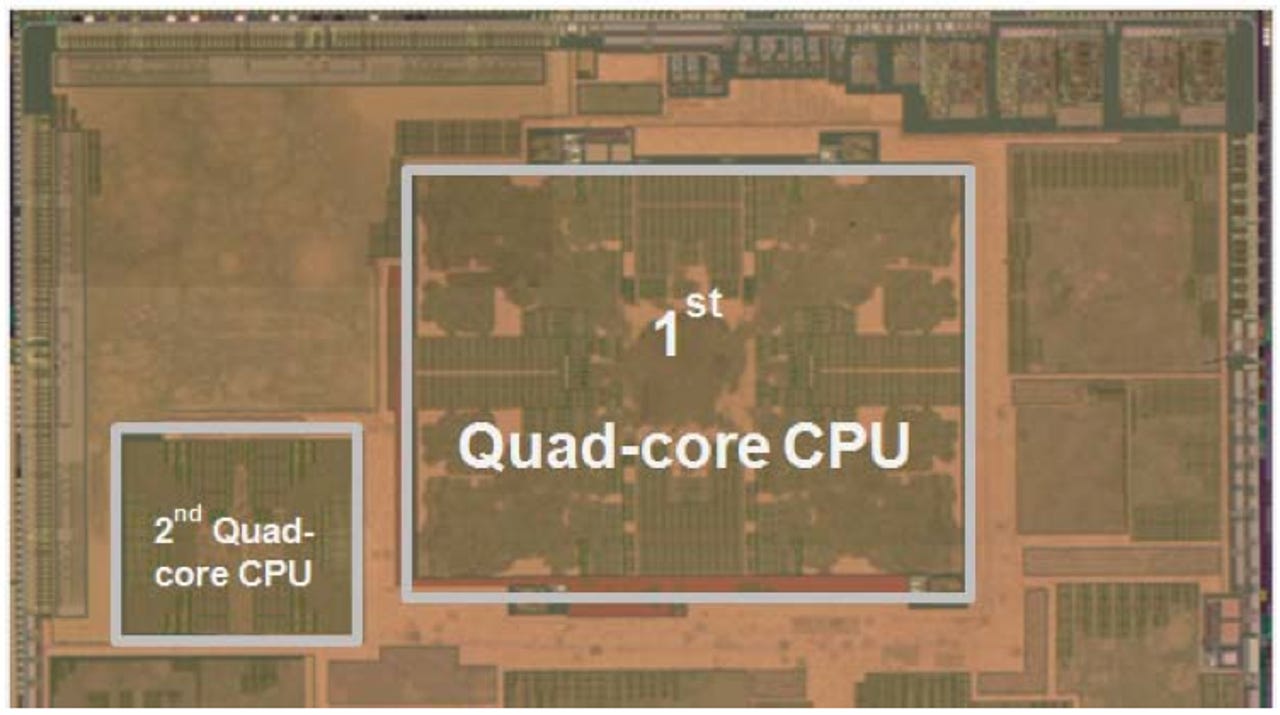The eight-core era arrives

I’ve been skeptical of the core wars in mobile. But it turns out we’re going to get eight-core processors whether we need them or not.

On the heels of the launch of the Galaxy S4 smartphone, Samsung announced that it is about to start cranking out the Exynos 5 Octa eight-core processor. Renesas isn’t far behind with its APE6 eight-core chip and ARM has said five more chipmakers will be announcing multi-core processors using its so-called big.LITTLE architecture this year.
The Exynos 5 Octa won’t show up in the U.S. version of the Galaxy S4, which will instead rely on a Qualcomm 1.9GHz quad-core Snapdragon, but it will reportedly be used in the S4 in other markets--and it will be used in other high-end smartphones and tablets. The processor is a technological marvel. Manufactured on Samsung’s advanced 28nm process, it has four high-performance Cortex-A15 cores and four low-power Cortex-A7 cores. Although Samsung has been quiet about it, Imagination Technologies confirmed earlier this week that the processor is using its PowerVR SGX544MP multi-core graphics. Samsung said the processor delivers twice the graphics performance of its Exynos 4 Quad and supports WQXGA (2560x1600) displays.
Samsung Galaxy S4
This is all pretty impressive. But it seems a bit strange to have eight-core processors in smartphones when most PCs are getting by just fine with dual-cores (or quad-cores in high-end systems). The truth is that very few apps are designed to really take advantage of four cores let alone eight. Furthermore many applications that really need a lot of horsepower are already off-loaded to specialized hardware. The Exynos 5 Octa has a hardware engine that can record and play Full HD video at up to 60 frames per second and an image processor that can capture 13-megapixel shots at 30 frames per second, according to Samsung.
The real reason mobile chipmakers are pushing to eight-core may simply be because they can. The size of a chip determines how much it costs to manufacture. A chip with eight Cortex-A15 cores would be too large (and use too much power), but the A7 cores are tiny and ARM has already done much of the heavy lifting to make them work well together. At a recent chip conference, Samsung said that the A15 delivers 3x the performance of the A7, but it is also four times larger and uses 6x more power. So with big.LITTLE chipmakers and their customers get the best of both worlds: they can market it as an eight-core processor, but it has manufacturing cost and battery life of a quad-core chip. While it is a bit misleading, it’s good for users too. Most of the time you will be using only one or two cores, but the extra performance is there if you need it.
Nvidia was the first to adopt this companion core concept in its Tegra mobile processor, but it uses all of the same type of CPU cores running at different speeds. The Tegra 4 for tablets has four 1.9GHz A15s and a companion A15 core clocked at only 825MHz; the Tegra 4i for smartphones has four 2.3GHz A9s and a fifth “battery-saver” A9 core.
Intel insists that its manufacturing process and design allows the same cores to support a wide range of speeds so it doesn’t really need to mix and match different types of cores. They use relatively little power when they are not being taxed heavily, but can spike up to higher frequencies when needed. Over time the x86 processors in laptops look more and more like the System-on-Chip (SoC) designs in mobile devices, so we could eventually see these sorts of heterogeneous cores in future PCs too.